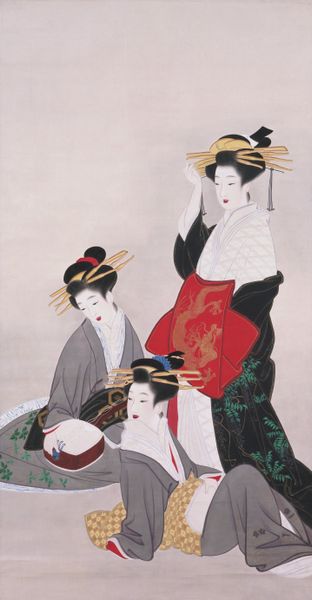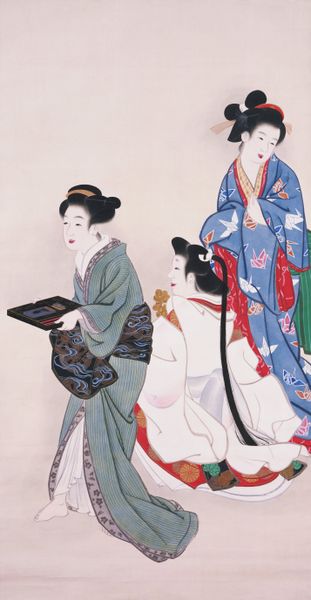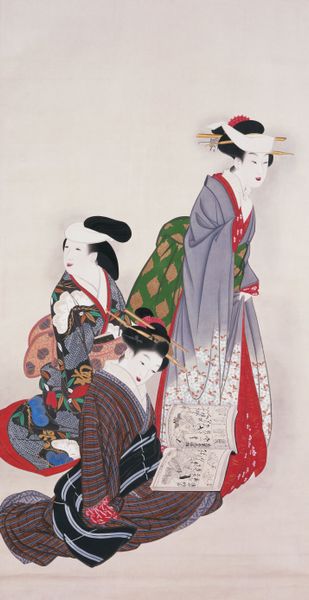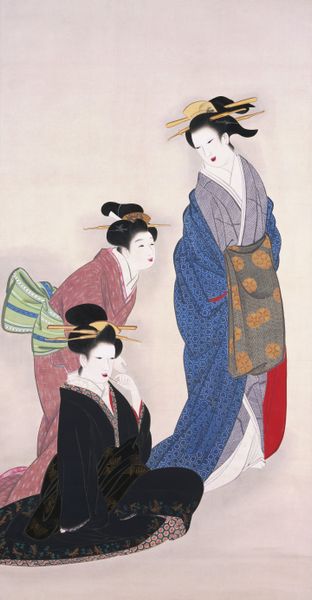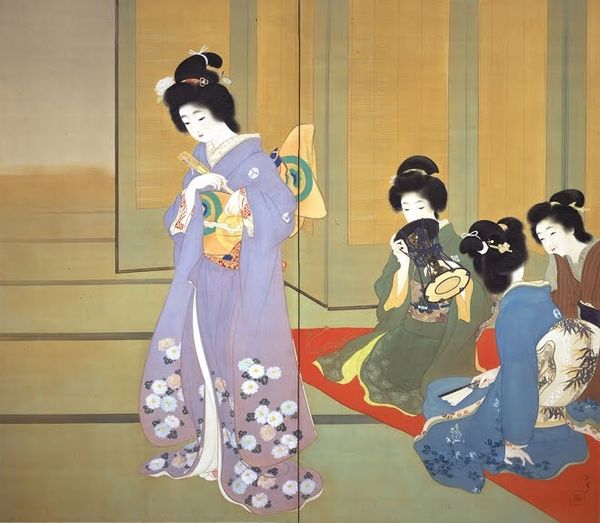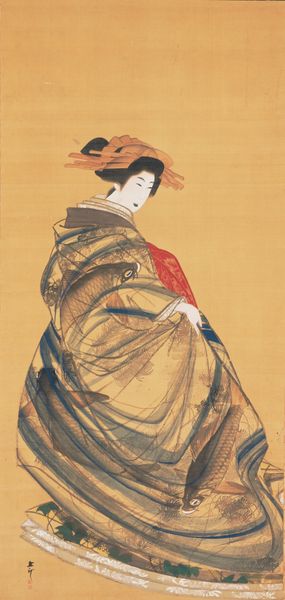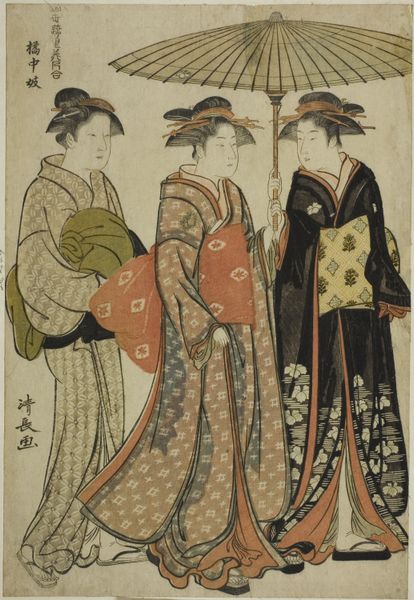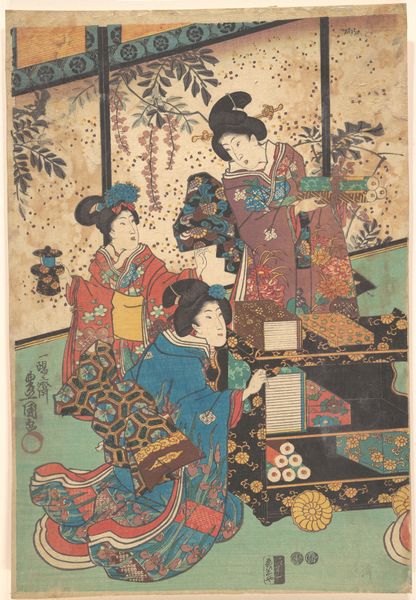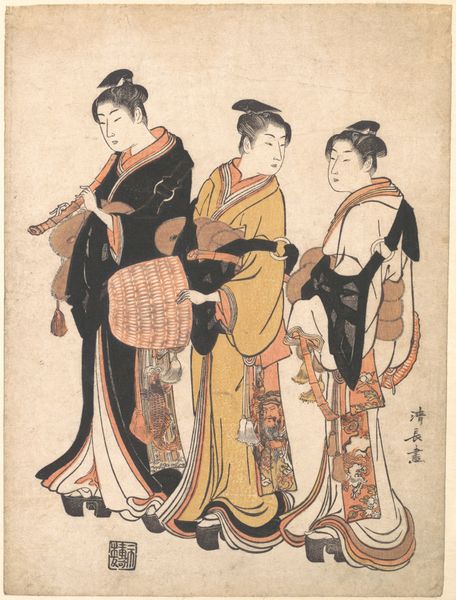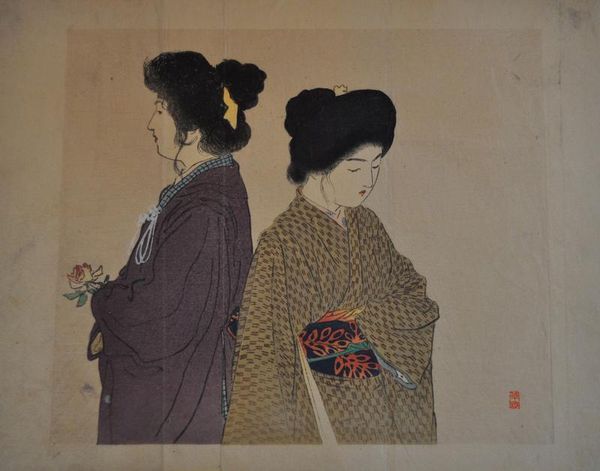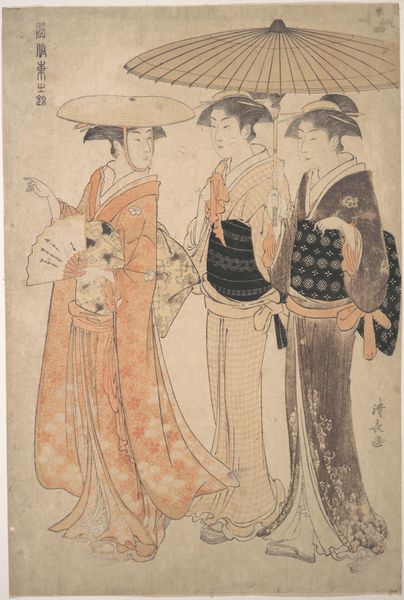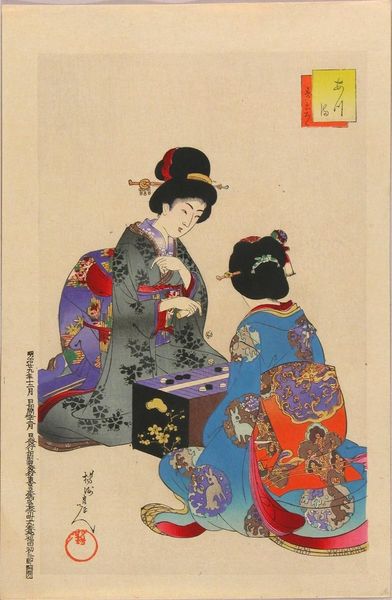
painting, paper, hanging-scroll, ink, color-on-paper
#
portrait
#
painting
#
asian-art
#
ukiyo-e
#
paper
#
hanging-scroll
#
ink
#
color-on-paper
#
group-portraits
#
portrait art
Dimensions: 70 1/2 × 36 5/8 in. (179.07 × 93.03 cm) (image)87 × 42 1/2 in. (220.98 × 107.95 cm) (mount)
Copyright: Public Domain
Yamaguchi Soken created "Ladies of the Warrior Class" with ink and color on silk during the Edo period, a time of shifting social roles in Japan. These women, likely wives or daughters of samurai, occupy a complex position. They are adorned in luxurious kimonos, signifiers of their status, yet their subdued expressions hint at the constraints placed upon them. During the Edo period, samurai women were expected to manage the household, raise children, and maintain the family's honor, and their lives were heavily regulated by Confucian ideals. The arrangement of the figures, with one standing and two seated, could subtly represent the hierarchy and expected behaviors within their social sphere. Soken's delicate brushwork captures the beauty and grace associated with these women, but it also invites us to consider the sacrifices and limitations inherent in their roles. The painting serves as a poignant reminder of the intricate relationship between gender, class, and identity in historical narratives.
Comments
minneapolisinstituteofart about 2 years ago
⋮
In the Edo period, the material and design of kimono were strictly regulated by the government along class lines, such that class and occupation were identifiable by costumes and hairstyles. Here (from left to right) are ladies of the warrior class, wives of merchants, young maidens, working girls, and women in the demimonde. Soken’s extraordinary brush control and use of pigments can be seen in the delicate hairlines and the texture of complexions and make-up. The son of a kimono merchant, he depicted magnificent kimono with delicate folds suggesting the body under the fabric.
Join the conversation
Join millions of artists and users on Artera today and experience the ultimate creative platform.
